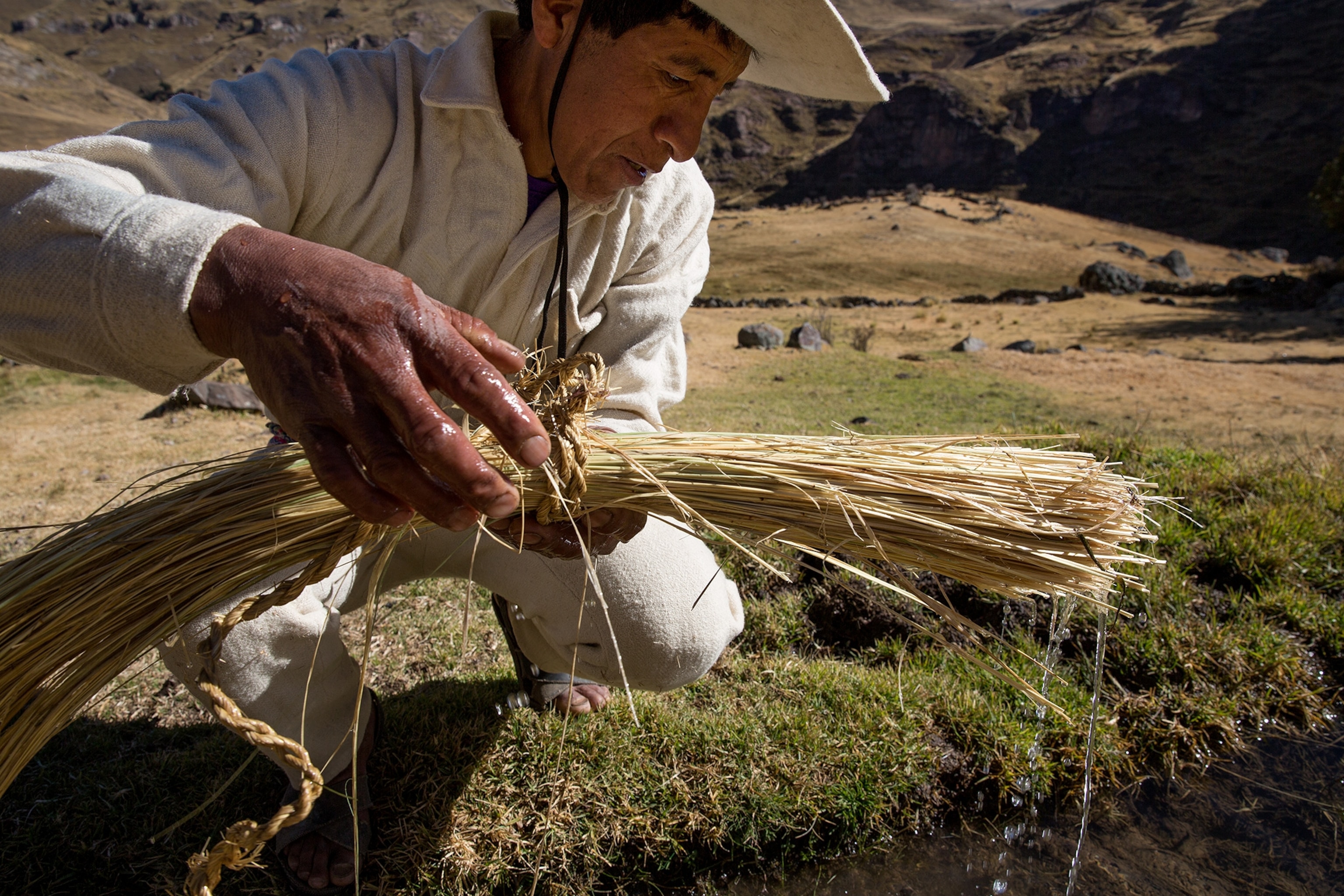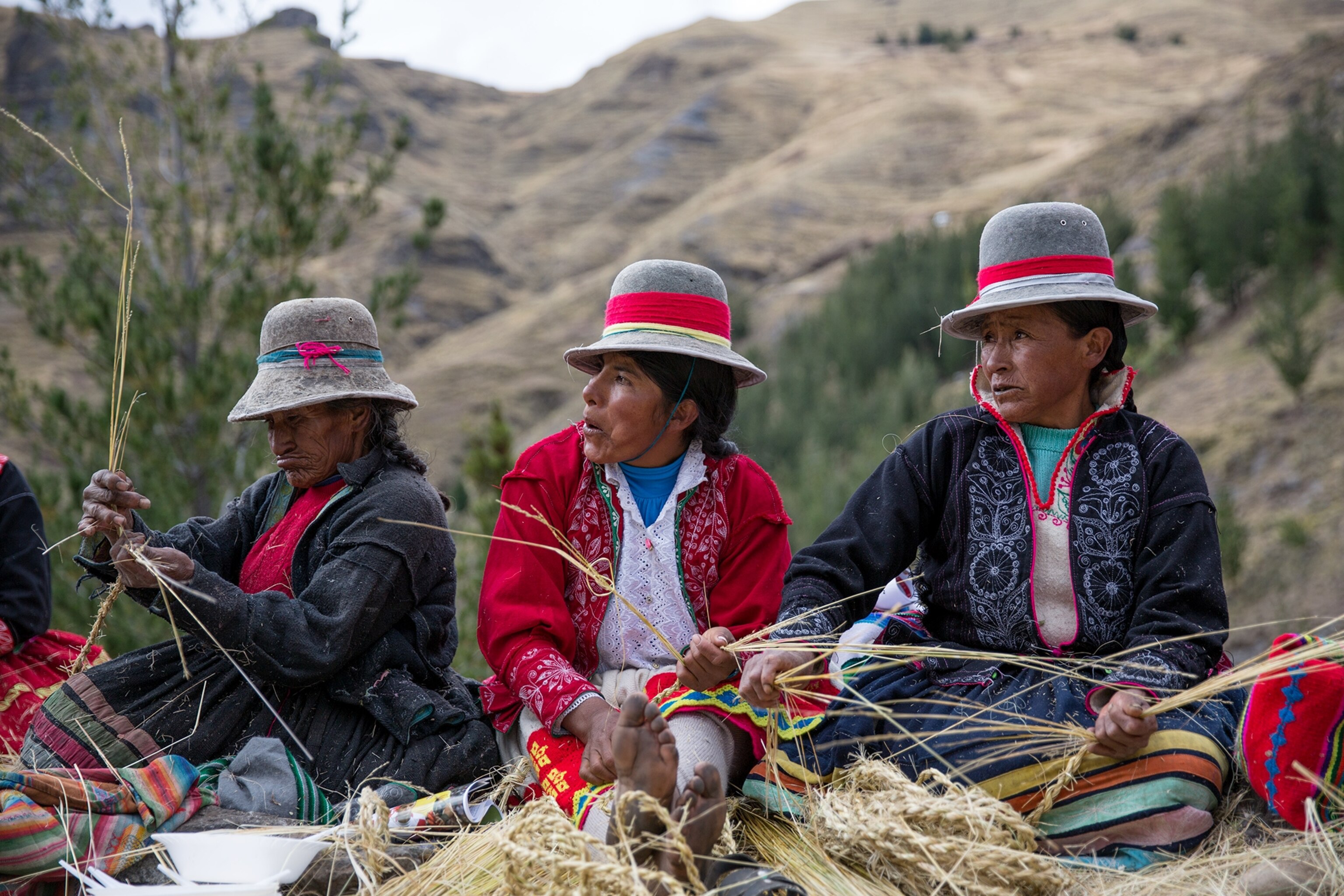
This Suspension Bridge Is Made From Grass
The 120-foot-long Incan bridge has been built and rebuilt continuously for five centuries.
On either side of a gorge high in the Peruvian Andes, an aging rope bridge sags precariously over the Apurímac River.













Every spring, communities gather to take part in a ceremony of renewal. Working together from each side of the river, the villagers run a massive cord of rope, more than a hundred feet long and thick as a person’s thigh, across the old bridge. Soon, the worn structure will be cut loose and tumble into the gorge below. Over three days of work, prayer, and celebration, a new bridge will be woven in its place.
The Q’eswachaka bridge has been built and rebuilt continuously for five centuries.
For hundreds of years it was the only link between villages on either side of the river in this region of Peru’s Canas Province—just one of many similar rope suspension bridges built during the Inca Empire, linking the massive territory by way of what is now known as the Great Inca Road. The road spanned nearly 25,000 miles and connected previously isolated communities, allowing soldiers, messengers, and ordinary citizens to traverse the empire.
The transportation network was part of what the Inca saw as their mandate to “go forth in the world and organize the world after a time of chaos,” says José Barreiro, assistant director of research and director of the Office for Latin America at the Smithsonian National Museum of the American Indian. Barreiro was co-curator of an exhibition on the Inca Road and researched the Q’eswachaka Bridge.

“The bridges were part and parcel of that expansion of the empire from Cuzco into four directions, and crossing the very aggressive Andean geography,” he says.
The Spanish colonizers who toppled the empire in the 16th century were impressed by the engineering feat of the suspension bridges, built in areas where the rivers were too wide to be connected with wooden beams.
But over the years, some of the bridges were destroyed. Others fell into disuse and eventually disappeared with the introduction of new roads and bridges meant to serve cars in the 20th century.



Largely because of the isolated location, the tradition of the Q’eswachaka bridge endured, and today connects four Quechua-speaking communities: Huinchiri, Chaupibanda, Choccayhua, and Ccollana. Although a new metal bridge was built nearby for cars to cross the river, surrounding residents have continued using the old rope bridge to cross on foot for trade and social visits.
The Q’eswachaka bridge was inscribed in 2013 on UNESCO’s Intangible Cultural Heritage of Humanity list for its significance to the people still living in the region.
“You can see the living culture in front of you today that harks back to 500 years ago,” Barreiro said. “As the political empire of the Incas was destroyed, what was left behind was the culture of the people at the village level.”
A major component of that culture is the idea of common labor, he says. Communities join together to work on common projects without the expectation of pay, knowing that the entire village or region will benefit in the end.

The methods of building the bridge, passed down through generations, have changed little over the years.
The process begins with the collection of strands of long grass, which are twisted together to form thin ropes. These, in turn, are twisted together into larger ropes, which are finally braided to form the heavy cables that will anchor the bridge. The communities then join together in the task of stretching the cables to prepare them for installation.
The cables are affixed to sturdy stone bases and experienced bridge builders begin working their way from the edges to the middle of the bridge, weaving the sides and floor with fibers and sticks. Once the builders meet in the center, they lay matting on the floor, and the new bridge is complete.
One notable change in the ritual in recent years is an increase in frequency, Barreiro said. Previously, the communities replaced the bridge once every three years. But as increased accessibility and tourism have brought more visitors to the area, they have increased the frequency to once a year. He attributed this both to safety concerns—the bridge is now seeing more traffic—and to the villagers’ recognition of the opportunity to draw more tourism by making the ceremony an annual ritual.
Once the bridge is completed, the communities celebrate with music, prayer, and feasting. The Q’eswachaka Bridge is now ready to serve another year.

You May Also Like
Go Further
Animals
- Orangutan seen using plants to heal wound for first timeOrangutan seen using plants to heal wound for first time
- What La Palma's 'lava tubes' tell us about life on other planetsWhat La Palma's 'lava tubes' tell us about life on other planets
- This fungus turns cicadas into zombies who procreate—then dieThis fungus turns cicadas into zombies who procreate—then die
- How can we protect grizzlies from their biggest threat—trains?How can we protect grizzlies from their biggest threat—trains?
Environment
- What La Palma's 'lava tubes' tell us about life on other planetsWhat La Palma's 'lava tubes' tell us about life on other planets
- How fungi form ‘fairy rings’ and inspire superstitionsHow fungi form ‘fairy rings’ and inspire superstitions
- Your favorite foods may not taste the same in the future. Here's why.Your favorite foods may not taste the same in the future. Here's why.
- Are the Great Lakes the key to solving America’s emissions conundrum?Are the Great Lakes the key to solving America’s emissions conundrum?
- The world’s historic sites face climate change. Can Petra lead the way?The world’s historic sites face climate change. Can Petra lead the way?
History & Culture
- Meet the ruthless king who unified the Kingdom of Hawai'iMeet the ruthless king who unified the Kingdom of Hawai'i
- Hawaii's Lei Day is about so much more than flowersHawaii's Lei Day is about so much more than flowers
- When treasure hunters find artifacts, who gets to keep them?When treasure hunters find artifacts, who gets to keep them?
Science
- Why ovaries are so crucial to women’s health and longevityWhy ovaries are so crucial to women’s health and longevity
- Orangutan seen using plants to heal wound for first timeOrangutan seen using plants to heal wound for first time
Travel
- A slow journey around the islands of southern VietnamA slow journey around the islands of southern Vietnam
- Is it possible to climb Mount Everest responsibly?Is it possible to climb Mount Everest responsibly?
- 5 of Uganda’s most magnificent national parks
- Paid Content
5 of Uganda’s most magnificent national parks




